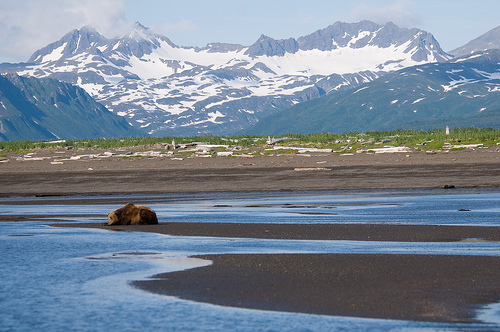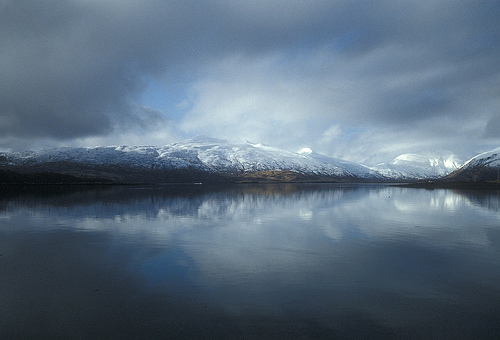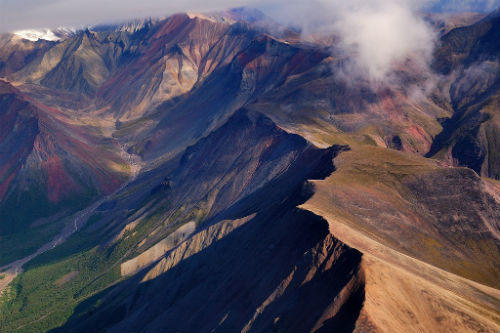Top 10 Best Places to Visit in Alaska
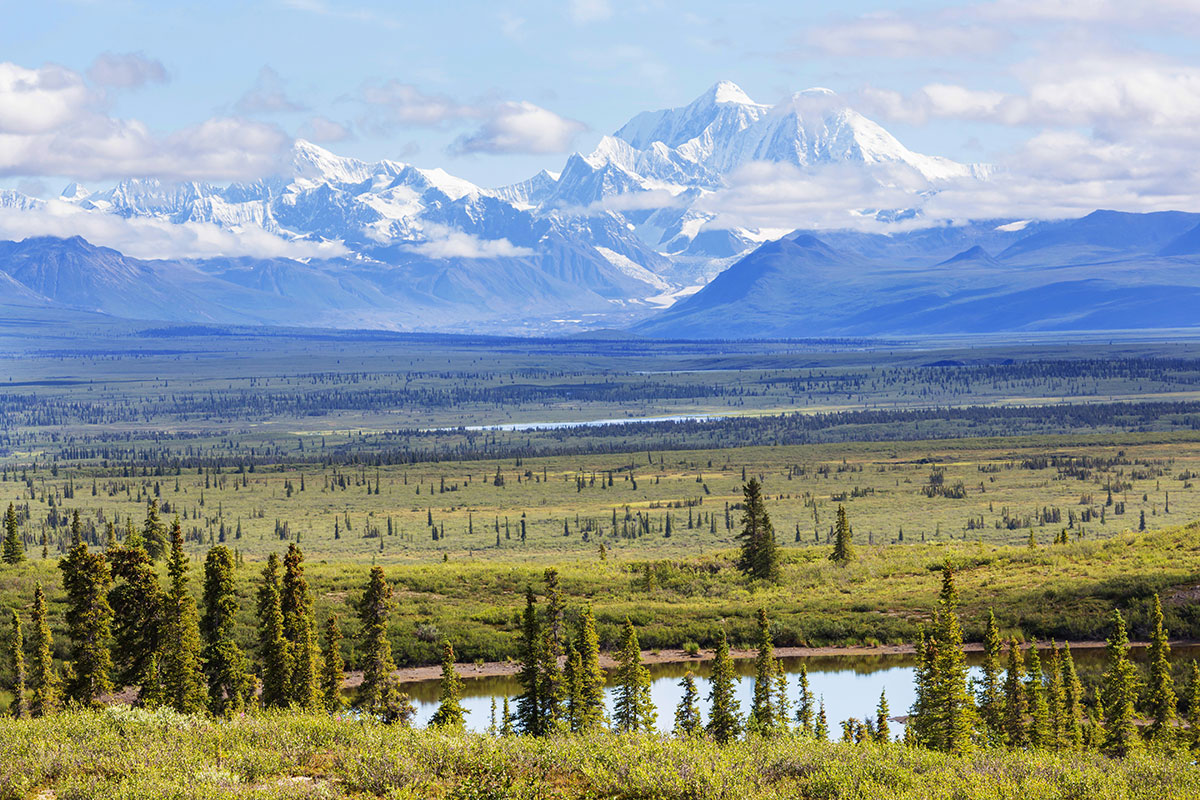
Are you planning a trip to Alaska? If your answer is yes, you’ve come to the right place. Alaska is a huge state and narrowing down what you want to do and see can sometimes be a challenge. As the biggest and least densely-populated state in the union, Alaska has thousands of miles of protected landscapes, ensuring that its sense of tranquility and remoteness will be there for future generations. In a state brimming with mountain crags, herds of caribou and serene ocean vistas, where you do you start? Trust us when we say we’ve got the inside scoop on some of the best places to visit in Alaska to add to your itinerary.
1. Denali National Park and Preserve
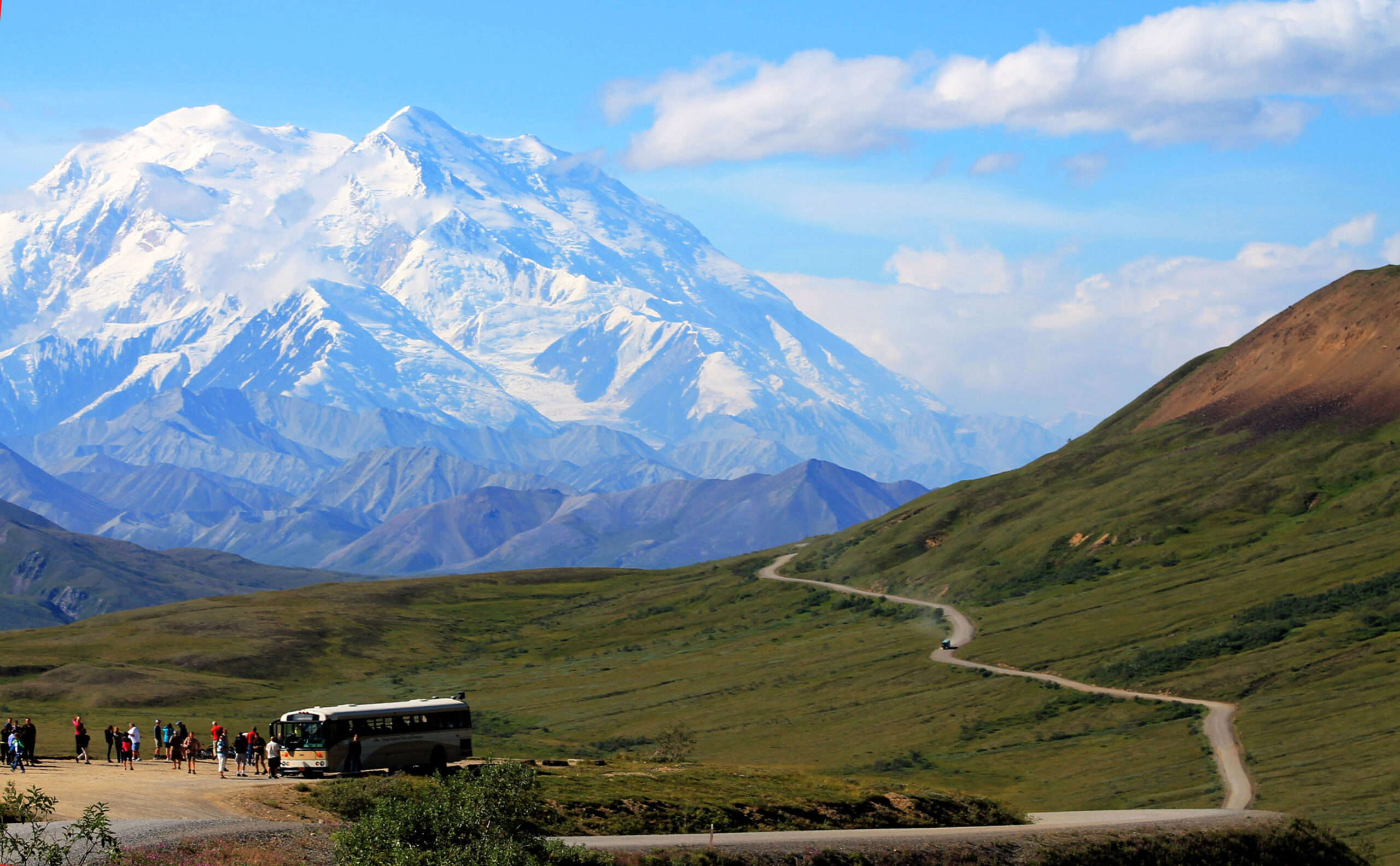
Denali National Park is home to some of the most iconic wildlife that travelers can see which comes as no surprise since the park boasts 6.1 million acres to wander. With many animals roaming around the park, keep an eye out for the big five — moose, bears, Dall sheep, wolves and caribou.
While visitors are permitted to take a self-drive adventure along the Denali Park Road up to mile 15, those who plan to go further will need to take the hop-on, hop-off park shuttle bus or one of the other tour buses. This mass transit system was put into place as park officials began to anticipate an increase in traffic, and they were right. Roughly 600,000 people travel to the park each year! Using the bust system helps reduce traffic and protect the park.
There are a number of bus tours to choose from including narrated tours that combine stories about the park’s rich history and information about the vegetation and animals that live inside the park. In 2022, bus tours will travel up to mile 43.
If you are curious about all the attractions and activities that are offered in the park, we recommend you don’t skip out on making a stop at the Denali Visitor Center and the areas surrounding the center. At the visitor center you can explore exhibits, catch panoramic views of the park through the large glass windows, chat with a ranger and watch the park film before you take off on your adventure through the park.
For the easiest way to get to Denali National Park, hop on a Blue or Yellow Denali Rail Tour for uninterrupted views of Alaska’s natural beauty en route aboard glass-domed rail cars.
2. Katmai National Park and Preserve
This photo is used under a Creative Commons license by T. Marschner
Katmai’s base camp of King Salmon can only be reached via ferry or plane, but once there, this remote natural world on the Alaska Peninsula feels like stepping back into a primordial era.
A huge attraction in the Park is Brooks Falls, where grizzly bears line up during the salmon spawn to dine on a waterfall-to-mouth feast. If you have seen this footage before on nature shows, prepare to be wowed by the sight of these bears up close and personal.
Another fascinating view can be had in the Valley of Ten Thousand Smokes, where a completely unknown volcanic vent (Novarupta) brought itself into immediate notice with the 20th century’s most powerful volcanic eruption. As the Ukak River valley was buried beneath hundreds of feet of scalding ash, the water beneath heated to steam and escaped as fumaroles, which are fascinating cracks in the surface of the hardened ash field.
Now, even as the steam has cooled, the valley is still very worth seeing for the contrast of its multi-colored volcanic plain, the remaining snow-topped peaks, and the collapsed mountain of the 1912 eruption. It’s simply incredible, and oh-so-Alaska.
3. Matanuska Glacier
This photo is used under a Creative Commons license by Frank Kovalchek
In a state full of glacier activity, Matanuska Glacier is the granddaddy of them all. Located near Matanuska Glacier State Recreational Site, it is the largest glacier that can be accessed by car, and clocks in at 26 miles long and 4 miles wide at its endpoint.
Just how did Matanuska arrive at its current location? It has been in a period of glacial retreat for around 10,000 years, and while other Alaska glaciers have seen accelerating retreats in the past century, Matanuska has remained relatively stable for 20 years and counting.
It is a “valley glacier,” and has the very mystical power of generating its own microclimate: as it flows through the Chugach Mountain valley, the cold air of the super-pressured glacial ice forces warm air upwards, thus creating a pocket of more favorable weather in its immediate vicinity. Pretty neat.
If the stunning view from the road leaves you wanting more, a small fee gains you access to Matanuska Glacier Park, where you can hike on your own or with a guide and see the crevassed, enigmatic, blue ice up close.
4. Kodiak Island
This photo is used under a Creative Commons license by U.S. Fish and Wildlife Service
Also only accessible via ferry or sea plane, Kodiak Island is known as Alaska’s “Emerald Isle” and boasts stunning coastline and meadows alive with blooms.
Kodiak’s mild coastal climate lends itself to a diverse range of wetlands and plant species, and it hosts a Sitka Spruce forest that is the only forest of its kind in the world. To top it off, the Kodiak bears roaming about the island are a subspecies one can only discover on the archipelago.
From the intriguing WWII history at the Fort Abercrombie State Historical Park to the glimmering ocean vistas and electric green fields, Kodiak is a can’t-miss destination for those hoping to grasp serenity at sea.
5. Tatshenshini-Alsek River
This photo is used under a Creative Commons license by Sam Beebe
For something truly above and beyond Alaska’s “call of the wild,” a float down the untamed Tatshenshini-Alsek River means an unforgettable feeling of seeing what few others have seen before.
This river voyage actually begins in the Yukon territory of Canada, where the Tatshenshini flows past prime wildlife viewing areas and through brisk currents before converging with the Alsek River. There, rafters have the experience of floating through the surreal and justifiably famous glacier-dammed Alsek Lake—tapping the glacial ice with their paddles—before continuing on the Alsek River into Alaska for miles more of heaven-scraping peaks and gigantic icebergs floating along for the ride. The journey from the Yukon’s Dalton Bay to Dry Bay is Alaska at its most adventurous.
6. Lake Clark National Park and Preserve
This photo is used under a Creative Commons license by Frank Kovalchek
Whether it’s the blue skies of summer or the rich colors of autumn, the placid, turquoise water of Lake Clark multiplies the beauty of its surroundings.
Although the region now protected within the National Park has been occupied by humans since prehistoric times, Lake Clark still feels untouched by habitation. It truly has everything: salmon traveling through their yearly spawning missions, seal and bears preying on the fish, and a vibrant population of waterfowl. Two active volcanic peaks loom over the park, emitting portentous plumes of steam. Of the two – Mt. Iliamna and Mt. Redoubt – Redoubt claims the most recent eruption in 2009.
7. Wrangell St. Elias National Park
This photo is used under a Creative Commons license by James Brooks
Wrangell St. Elias is big. It’s the nation’s largest national park and one of the largest protected areas of wilderness in the entire world. What does that mean to you? A wonderland of mountains, grazing game such as Dall sheep, and a truly solitary wilderness experience.
Wrangell St. Elias contains 8 of the 16 tallest mountains on the continent, rivaling Denali in the awe department. It is also a land of ice fields and the Malaspina Glacier, which could eat the state of Rhode Island for breakfast.
8. Portage Glacier
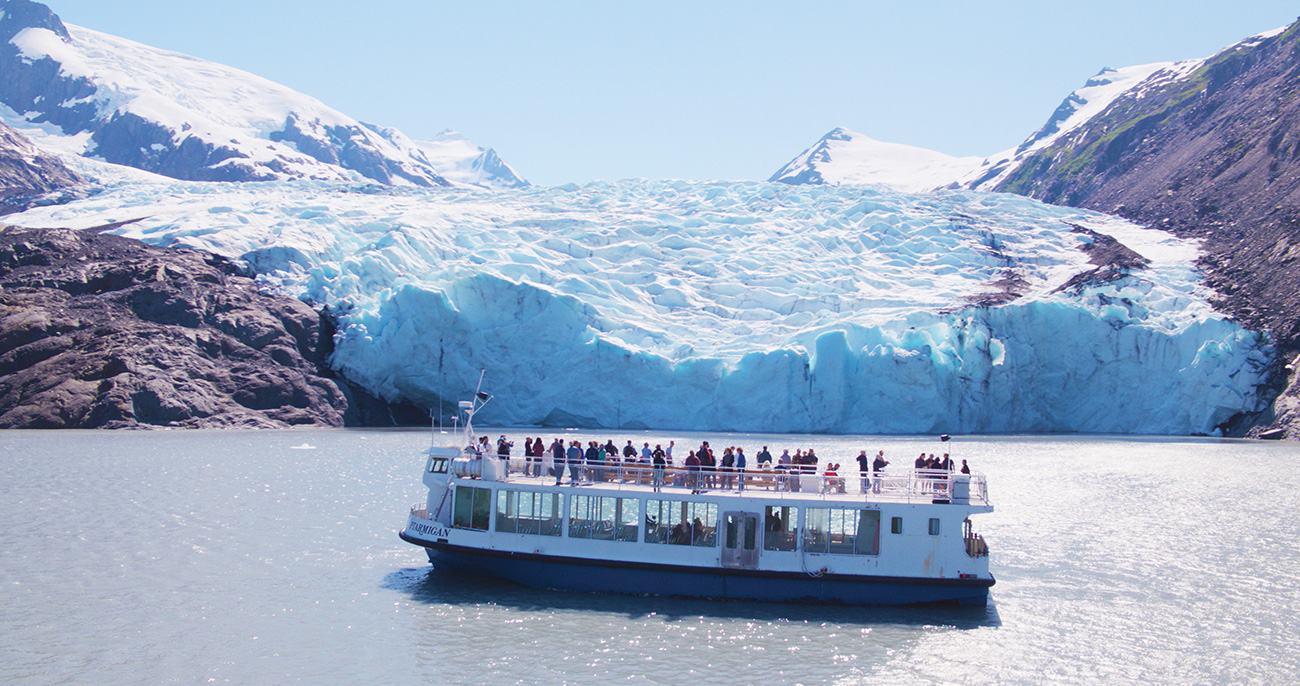
Portage Glacier is just a short drive from Anchorage and is one of the most visited glaciers in Alaska. There are two main ways to view the glacier: a short hike or a day cruise. Take a leisure hike on Portage Pass Trail starting from the nearby community of Whittier. The four-mile roundtrip trail is the only established trail with a view of the majestic glacier and is friendly to all ages. The hike can be done in two hours or longer, depending on how much time you want to enjoy the trail’s natural beauty and surrounding scenes.
If you want to get up close to the glacier, the day cruise is the way to go. Professionals onboard the Portage Glacier Cruise deliver information on the glacier’s history and additional fun facts while you get to sit back and take in the views. This is an entertaining and scenic way to spend the afternoon. The cruise allows you to get up close and personal with the glacier and wildlife, and you will catch views of waterfalls spilling into Portage Lake. If you listen close enough, you might be able to hear the glacier calving.
Want to make it a day trip? After you check out the glacier you can enjoy one of the many nearby hiking trails (with views of more glaciers). Byron Glacier Trail is a mild trail for all ages. The well-maintained trail is a little over one mile with a 100-foot elevation gain. Much of the trail runs close to Byron Creek which gives off the calming sounds of nature for those hiking along the trail.
For a more moderate challenge, check out the Trail of Blue Ice. Visitors can find the trailhead along Portage Lake Road for the 4.7 mile trail that reaches from Portage Lake to Moose Flats near the Seward highway. The hiking/biking trail features captivating views of the mountains and the glaciers between them.
On your way back to Anchorage, be sure to stop at the nearby Alaska Wildlife Conservation Center. Conservation, education, and research are the center’s primary focus and the outdoor attraction allows visitors to see moose, brown and black bears, musk ox, caribou, wood bison, and more along the 1.5-mile loop. You can walk or drive (since you’ve been hiking all day!) through the center. While you’re there, enjoy daily guest programs to get a closer look at the everyday life of the animals that call the center home.
9. Kenai Peninsula
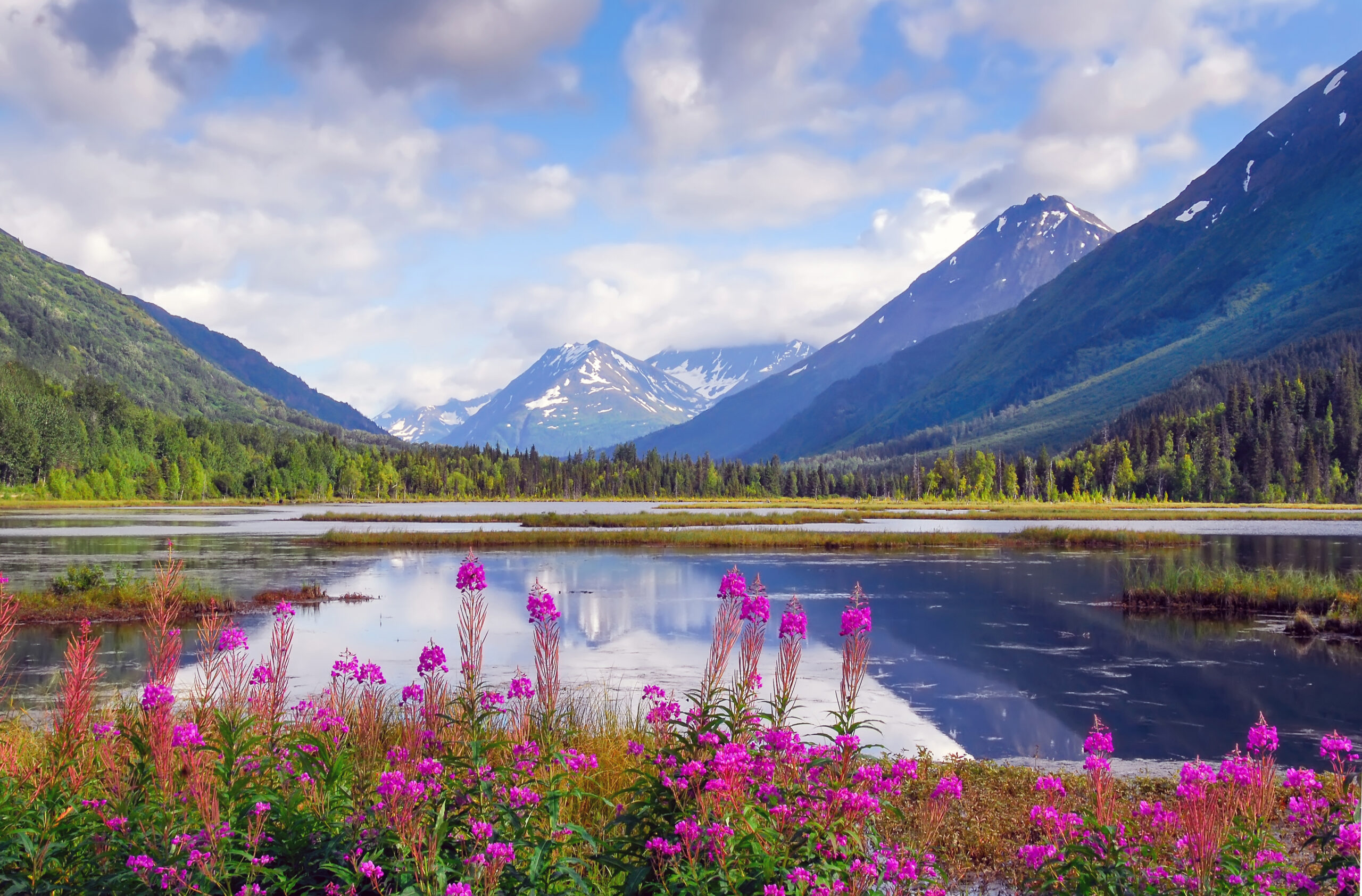
Head south out of Anchorage to the Kenai Peninsula, where you can get hooked on some of the finest salmon fishing in the state and embark on many sightseeing tours. Bonus, the scenic drive south is unlike any other. Take a full- or half-day Kenai Upper River Fishing tour and hook into the season’s fish. The tour is good for all fishing skill levels. Or, enter the turquoise waters of the Kenai River on a Scenic Float tour, where you can enjoy the serene beauty inside the heart of the Kenai National Wildlife Refuge.
After a day on the water, test out your luck and hope to strike gold while you gold pan with Prospector John in the quaint town of Cooper Landing. This entertaining opportunity is fun for the whole family —roll your sleeves up, have some laughs, and learn about the history of gold mining in Alaska.
10. South Denali
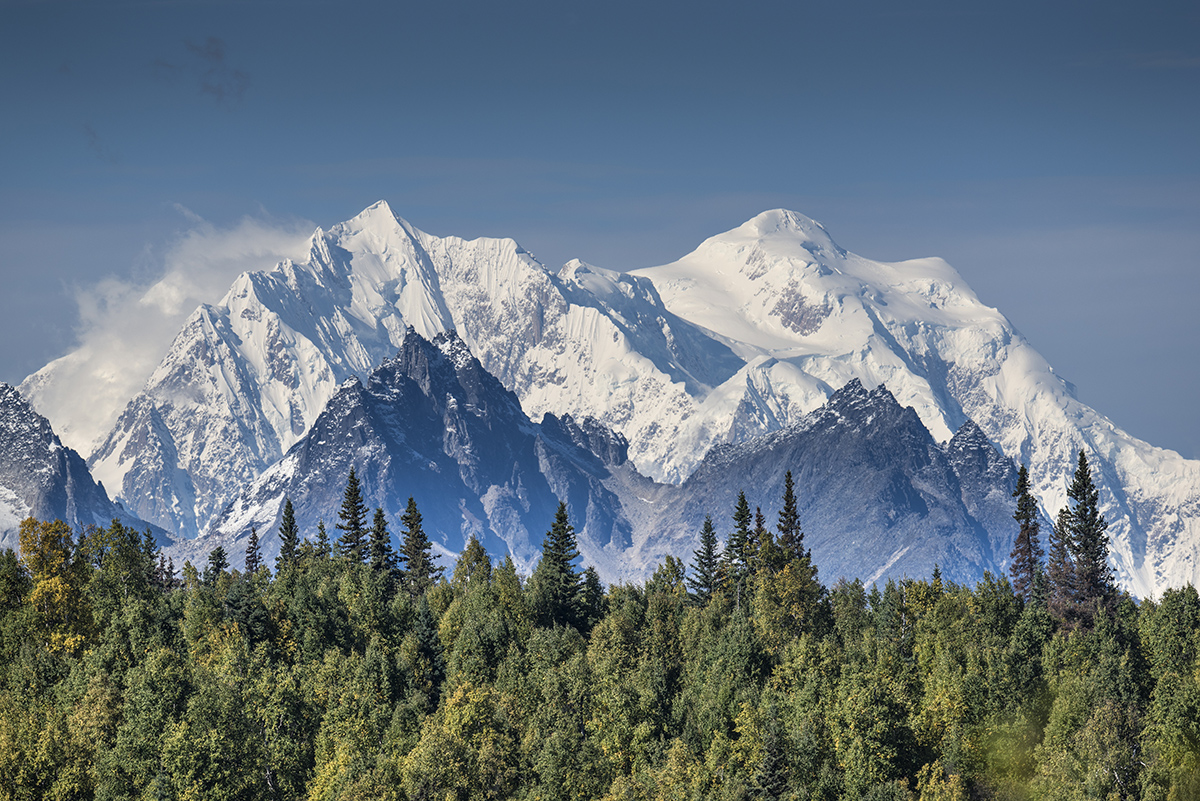
While most travelers have heard of Denali National Park, the area around Denali State Park might not have been on your radar. Located south of the National Park, this region offers many options for adventure and wilderness excursions as well as some of the best views of Denali and the Alaska range.
At almost half the size of Rhode Island, Denali State Park has several campgrounds, a multitude of hiking trails and lots of opportunities for wildlife viewing. Inside the park, the Byers Lake area is one of the more popular spots for camping and recreation.
The nearby town of Talkeetna is also located at the confluence of the Susitna, Chulitna, and Talkeetna Rivers, making it the prime spot for kayaking, river rafting, fishing, hiking, and jet boating.
No matter what epic Alaska adventure you want to embark on, let Gray Line Alaska help you find the perfect tour for your travels.
Back to Blog
